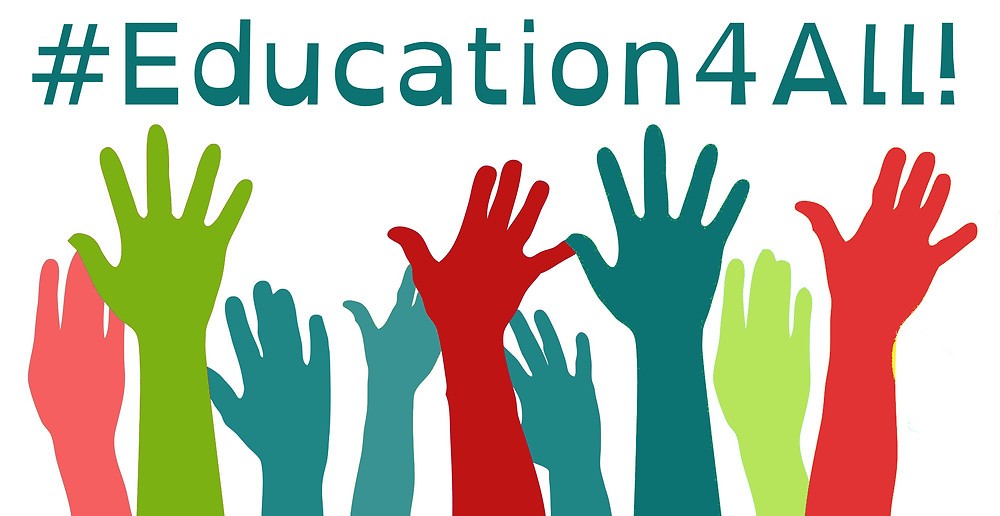In today’s diverse and dynamic world, education must evolve to meet the needs of every learner, regardless of their background, abilities, or challenges. That’s where inclusive education comes in. More than just a teaching approach, inclusive education is a mindset, a commitment, and a set of practices designed to ensure that learning is accessible to all students—not just a select few.
In this blog post, we’ll explore what inclusive education really means, why it matters, and how educators, schools, and communities can implement it effectively to make sure that every learner has the chance to thrive.
What Is Inclusive Education?
Inclusive education is the practice of educating all students—regardless of physical, intellectual, social, emotional, linguistic, or other conditions—in mainstream schools and classrooms. This includes children with disabilities, learning difficulties, minority backgrounds, or socio-economic disadvantages.
It’s rooted in the belief that every child has the right to quality education in an environment that respects diversity and promotes equity.
“Inclusive education is not a privilege. It is a fundamental human right of every child.”
– UNESCO
Why Inclusive Education Matters
Inclusive education is more than a moral obligation—it’s an educational necessity. Here’s why it’s crucial:
1. Equity and Equal Opportunity
Inclusive education ensures that all learners, regardless of their differences, have equal access to quality education and learning opportunities.
2. Social Integration
It promotes a culture of respect, empathy, and understanding by bringing together students from various backgrounds and abilities.
3. Improved Academic Outcomes
Studies show that inclusive classrooms lead to better academic performance for both students with and without disabilities.
4. Fosters Life Skills
Inclusive settings prepare students for real-world interactions, teaching collaboration, tolerance, and adaptability—skills that are essential in modern workplaces and communities.
Key Principles of Inclusive Education
To implement inclusive education for all, schools must adopt the following core principles:
1. Acceptance and Diversity
Recognizing that every learner is unique, and that differences in ability, culture, language, and background should be celebrated—not ignored or suppressed.
2. Accessibility
Making learning materials, environments, and resources physically, academically, and socially accessible to every student.
3. Participation
Encouraging active participation from all students in academic and non-academic activities.
4. Collaboration
Teachers, families, support staff, and communities working together to meet the diverse needs of students.
Strategies to Make Learning Accessible for All
Inclusive education isn’t achieved through theory alone—it takes intentional, practical action. Here are ten actionable strategies to help make learning inclusive and accessible:
1. Differentiate Instruction
Not all students learn the same way. Differentiated instruction involves modifying content, processes, and products based on learners’ needs, preferences, and abilities.
Examples:
- Using audio, video, and hands-on materials.
- Providing extra time for assignments or assessments.
- Offering choices in how students demonstrate learning.
2. Use Universal Design for Learning (UDL)
UDL is a framework that helps educators design curriculum that works for all students. It emphasizes multiple means of engagement, representation, and expression.
Tips:
- Provide information in multiple formats (text, visuals, speech).
- Allow students to respond in different ways (oral, written, artistic).
- Keep students motivated with choices and relevance.
3. Ensure Physical Accessibility
Create learning spaces that accommodate mobility, sensory, and other physical needs.
- Use ramps, elevators, and accessible restrooms.
- Ensure desks and tools are adaptable for students with disabilities.
- Minimize physical barriers in classrooms.
4. Support Language Diversity
For students who speak a different home language or come from multilingual backgrounds, provide language support and scaffolding.
- Use visual aids and gestures to support understanding.
- Encourage bilingualism and integrate cultural references in lessons.
- Pair new language learners with peer buddies.
5. Implement Collaborative Learning
Group work and peer learning promote interaction and inclusion. When students work together, they learn to appreciate different perspectives and build empathy.
Example activities:
- Think-pair-share
- Jigsaw reading
- Team-based projects
6. Provide Social-Emotional Support
Many students face emotional or psychological barriers that hinder learning. A supportive environment that values mental health is essential.
- Use regular check-ins or journaling.
- Promote kindness, mindfulness, and empathy.
- Involve school counselors or support staff when needed.
7. Involve Families and Communities
Inclusive education works best when families are actively involved in the learning process.
Strategies:
- Conduct regular parent-teacher meetings.
- Share strategies for home support.
- Include family and cultural perspectives in lessons.
8. Use Assistive Technology
Technology can bridge many gaps for learners with disabilities or special needs.
Examples:
- Screen readers and speech-to-text software
- Audiobooks and interactive whiteboards
- Apps for communication or time management
9. Provide Ongoing Teacher Training
Teachers must be equipped with skills, knowledge, and attitudes to manage inclusive classrooms.
- Invest in professional development on inclusive practices.
- Encourage peer mentoring and team-teaching.
- Share success stories and case studies.
10. Promote a Positive School Culture
At the heart of inclusive education is a culture of respect, dignity, and belonging. Every student should feel safe, valued, and capable.
- Celebrate diversity through events and lessons.
- Develop inclusive policies and anti-bullying programs.
- Reinforce positive behavior with recognition and encouragement.
Challenges of Inclusive Education (and How to Overcome Them)
Implementing inclusive education isn’t without obstacles. Some common challenges include:
- Lack of resources or trained staff
- Overcrowded classrooms
- Resistance to change
Solutions:
- Start small and scale gradually.
- Build partnerships with NGOs or educational organizations.
- Advocate for policy support and funding.
With commitment, creativity, and collaboration, these challenges can be overcome.
Real-World Examples of Inclusive Education
Many schools and countries have embraced inclusive education successfully:
- Finland: Emphasizes equity and supports all learners with individualized plans.
- Canada: Uses inclusive classroom strategies in mainstream schools.
- UNESCO Projects: Run inclusive education programs in low-income regions with great success.
These examples prove that inclusive education for all is not just a goal—it’s a tangible reality.
Final Thoughts
Inclusive education is more than placing diverse students in the same classroom—it’s about redefining how we teach, support, and value every learner. It demands a shift in mindset, policy, and practice, but the rewards are enormous: better academic outcomes, stronger communities, and a more equitable society.
When schools commit to making learning accessible for all, they unlock the true potential of education—to transform lives, one student at a time.



